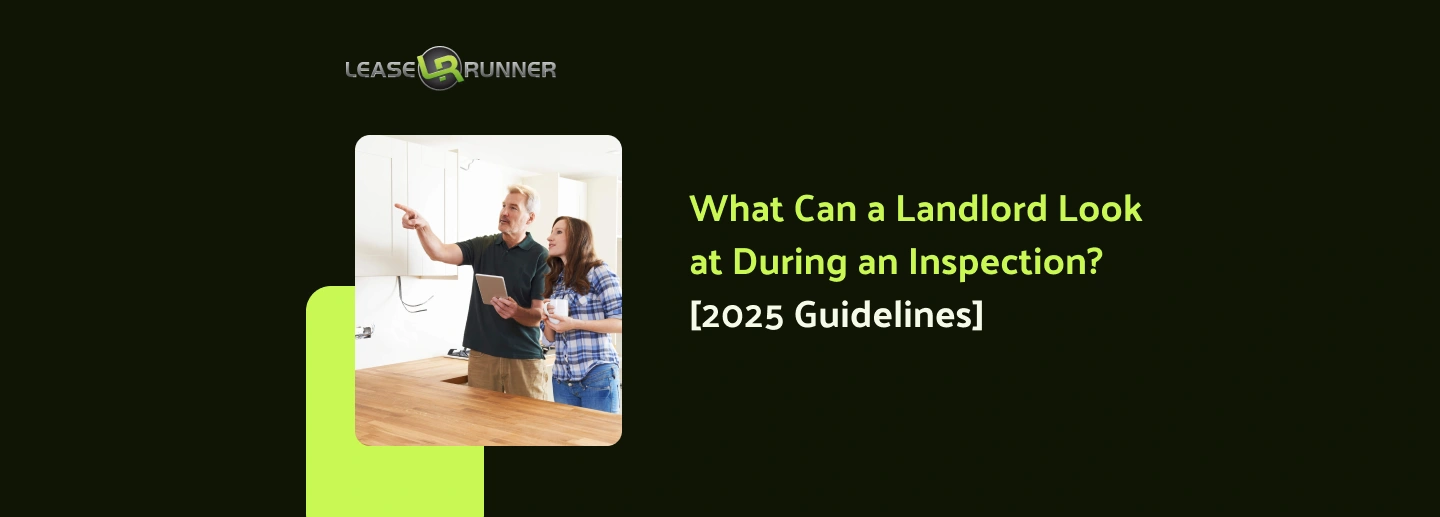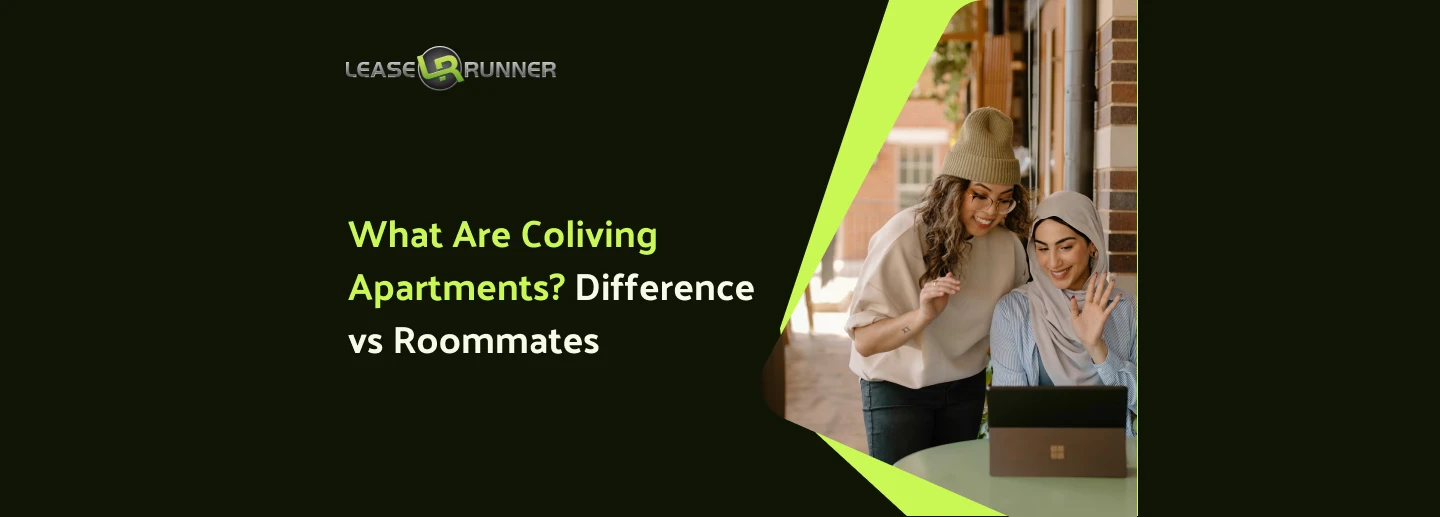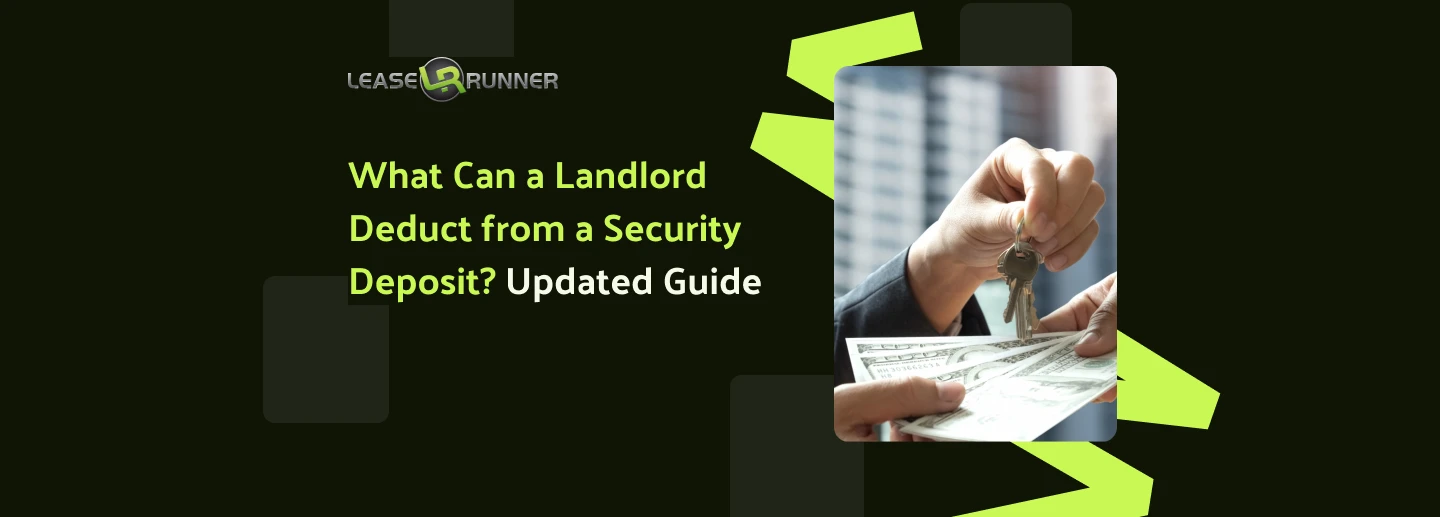
Routine inspections are a key part of managing rental property, but even experienced landlords pause to ask: What can a landlord look at during an inspection? The 2025 rules offer clearer boundaries, helping you protect your property without infringing on your tenant’s privacy. Let’s walk through what’s allowed, what’s off-limits, and how to approach it professionally.
What Is a Landlord Inspection?
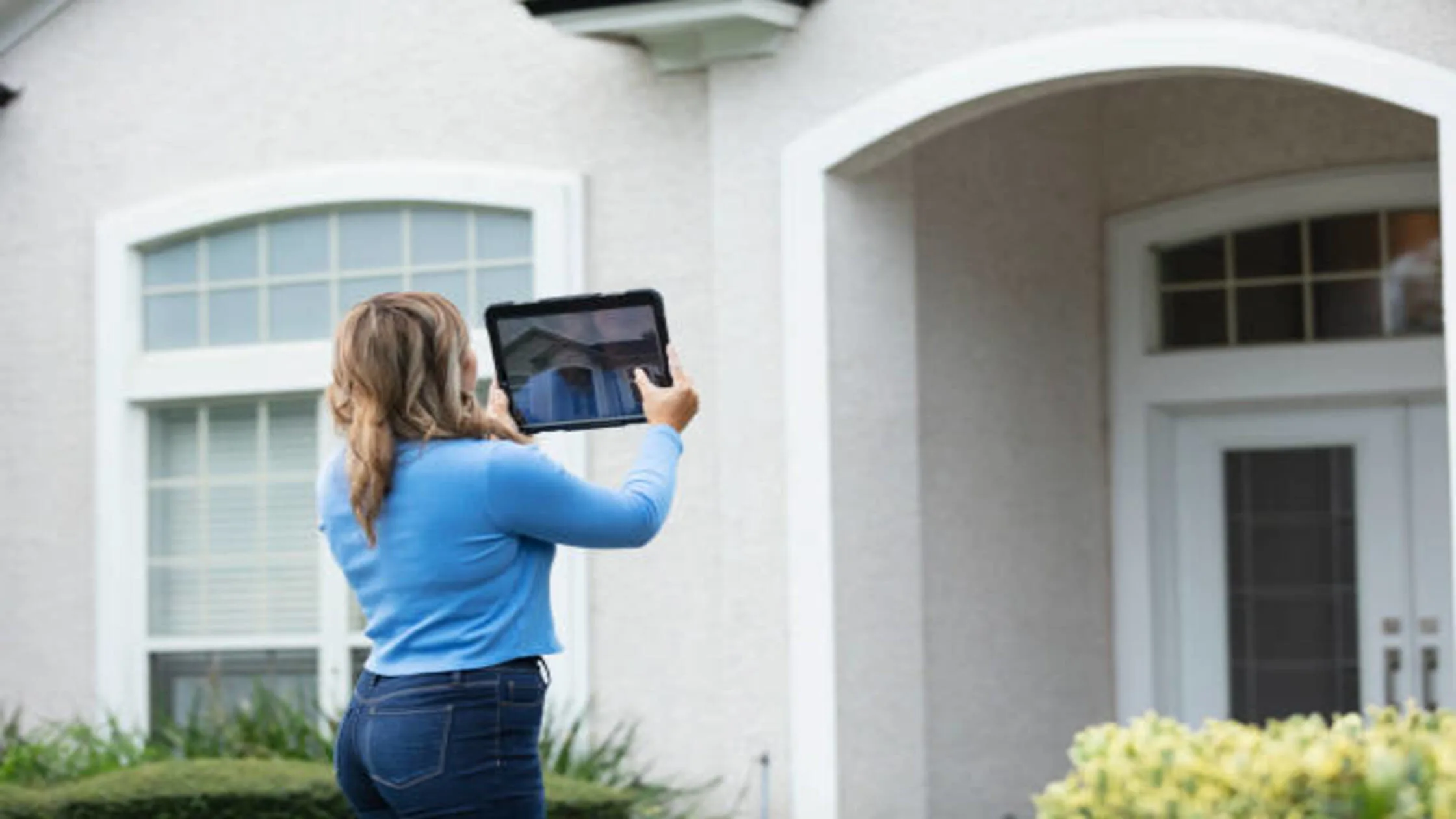
A landlord inspection is a routine check-up on your rental property to make sure everything’s in good working order. During an inspection, you’re checking for things like damage, wear and tear, safety concerns, and how well the tenant is maintaining the space. You also want to make sure the tenant is sticking to the lease.
Done respectfully and regularly, inspections help you stay in control of your property without creating tension. It’s one of the smartest habits a landlord can have.
Key Types of Property Inspections (and When to Do Them)
Some inspections happen when a tenant moves in or out, and others are just part of routine upkeep. If you want your rental to hold its value and continue justifying rent that’s 3 times the rent rule (a common rule many landlords use to screen tenants), then inspections are needed.
Here’s a quick breakdown of the main types and when you should schedule them:
Move-In Inspection
This happens right before a new tenant moves in. You walk through the property (ideally with the tenant) and document the current condition. That way, you both know what the place looked like from day one, which helps avoid security deposit arguments later.
Move-Out Inspection
This one happens when a tenant is leaving. You’ll compare the property’s condition to what it looked like at move-in. You’re checking for any excessive damage beyond normal wear and tear and deciding if any repairs need to come out of the security deposit.
For example, large holes in walls, broken tiles, or deep carpet stains are deducted from the security deposit, but normal aging like faded carpet is exempt from deduction.
If you hire a property manager, they typically handle the move-out inspection on your behalf. This process is often included in their management fee or may come with an additional charge.
Routine or Periodic Inspection
These are planned inspections you do during a lease to make sure everything’s running smoothly. Think of it like a regular check-up. You might spot a leaky faucet or something the tenant didn’t notice.
Note: You have to give proper notice before showing up.
Drive-By Inspection
This is exactly what it sounds like. You just drive past or walk by to check on the outside. Is the lawn overgrown? Is there trash piling up? It’s a quick way to spot any red flags without bothering the tenant.
Note: You’re not entering the home, so no notice is required.
Emergency Inspection
Emergencies can’t wait. A fire, gas leak, burst pipe, or even reports of strong odors may require you to enter the property immediately. In these cases, you're legally allowed to enter without prior notice.
After the emergency is handled, it’s a good idea to follow up with written documentation and, if needed, offer reassurance to the tenant about what was done and why.
However, in some cases, like dealing with a tenant with bad credit or a history of noncompliance, routine inspections become even more important to stay ahead of potential issues.
Why Should Landlords Carry Out Inspections Regularly?

Regular inspections help you catch small problems before they turn into expensive ones. It’s a smart business strategy:
- Protecting Your Investment: Your rental property is likely one of your biggest assets. Regular inspections make sure it doesn’t lose value due to neglect or damage. Well-maintained properties also attract better tenants and justify higher rent.
- Improving Tenant Relationships: When done professionally and with respect (we will guide you on how to do it below), inspections can actually build trust. Tenants see that you care about the property and their living conditions.
- Staying Legally Covered: If you ever have to go to court over a deposit dispute, eviction, or damages, having a solid record of inspections can make or break your case. In 2025, more states will require detailed records from landlords.
Skipping inspections can leave you blind to hidden damage or lease violations that get worse (and more expensive) over time. You might face unexpected repair bills, legal trouble if the property violates safety standards, or lose a court case for lack of evidence. In the long run, it can seriously hurt your cash flow and the value of your investment.
Landlord Inspection Rights and Legal Responsibilities in 2025
Laws vary by location, but we will look at the basics every landlord should understand in 2025:
Notice Requirements
In most areas, landlords must give written notice before entering the property. The standard is usually 24 to 48 hours, and the notice should include the date, time, and purpose of your visit. Some examples are:
- California: Requires 24 hours’ written notice for entry. Notice can be delivered in person, by mail, or electronically (if agreed upon in writing).
- Florida: Requires at least 12 hours' notice, and entry must be between 7:30 a.m. and 8:00 p.m. unless the tenant agrees otherwise.
- Illinois: Requires 24 hours' notice in most cases, but there's no statewide law.
- Texas: Interestingly, Texas has no state law requiring notice, but lease agreements often include notice terms. Without a lease clause, a landlord could technically enter without notice, but it’s strongly discouraged.
Tip: Even if your state doesn’t have a required notice period, always give at least 24 hours. Courts usually view unannounced visits as a breach of the tenant’s right to quiet enjoyment.
Tenant Privacy Rights
Even though you own the property, it’s the tenant’s home. You can’t just walk in, open closets, or go through personal belongings. Your inspection should focus on areas that impact health, safety, and the structure of the property, like plumbing, walls, windows, and shared spaces.
Violating privacy laws could lead to lawsuits or penalties. In 2025, privacy protections for renters have been expanded in many jurisdictions, so be careful and respectful.
Emergency Access Rules
Emergencies fall outside the usual notice requirements. When a situation demands immediate attention, such as a fire, gas leak, or burst pipe, landlords have the legal right to enter the property without prior notice. This exception exists to prevent further damage or danger to the property or tenants.
Always document the reason for entry, what actions were taken, and follow up with the tenant as soon as possible. And avoid using “emergency” as a loophole to bypass proper notice procedures. Courts tend to view this misuse harshly, and it can damage your relationship with tenants.
The Frequency of Inspection
Most experts and lease agreements consider every 3 to 6 months a reasonable standard. Inspections scheduled too frequently may come across as intrusive, while going too long without one increases the risk of unnoticed damage or lease violations.
In recent years, some states and cities have added clear limits:
- Arizona: Allows for reasonable inspections, but doesn’t specify a limit. Courts typically accept quarterly or biannual inspections as reasonable.
- Minnesota: Requires “reasonable notice and reasonable frequency.” Entry more than 2–3 times per year may be seen as intrusive unless justified.
What Can a Landlord Look at During an Inspection?

A well-structured inspection focuses only on the areas that directly affect the safety, maintenance, and compliance of the rental unit.
1. Interior of the Property
A visual check of the inside of the home helps spot damage, safety concerns, or maintenance issues early. High-traffic and high-use areas are recommended:
- Walls and floors (cracks, holes, stains, damage)
- Appliances (functionality, signs of misuse)
- Plumbing (under sinks, around toilets for leaks or mold)
- Heating/cooling systems
- Smoke and carbon monoxide detectors
- Signs of pests or water intrusion
This kind of inspection also helps confirm that the property is being used as a residence.
2. Exterior & Grounds
The outside of the property is just as important. Regular checks keep curb appeal high and prevent long-term structural issues. Look for:
- Lawn and landscaping condition
- Trash or debris around the home
- Roof, gutters, windows, and siding
- Fencing, gates, porches, and decks
- Signs of unauthorized modifications (e.g., satellite dishes, outdoor structures)
Maintaining the exterior ensures the property complies with HOA rules or city ordinances.
3. Lease Compliance Checks
Inspections offer a chance to confirm that tenants are following the terms of the lease. This may include:
- No smoking indoors (look for lingering odors, ash, or burns)
- Approved pets only (check for signs of unapproved animals)
- No long-term guests beyond the allowed period
- Reasonable cleanliness and upkeep (to prevent damage or health risks)
Lease violations like these can cause serious issues over time (damage to walls, smells that are hard to remove, or overcrowding).
What a Landlord Can NOT Look at During an Inspection
There’s a line between protecting your property and violating a tenant’s right to privacy. During inspections, landlords must avoid snooping, searching, or evaluating things that fall outside health, safety, or lease-related concerns.
We have listed some key boundaries below.
1. Protected Private Areas
Bedrooms and bathrooms may be inspected for general condition, but they are still considered private spaces. Entering with proper notice is permitted, but inspecting these rooms doesn’t include opening drawers, digging through hampers, or checking medicine cabinets.
State laws and courts consistently side with tenants when landlords go beyond a visual inspection.
2. Tenant’s Personal Belongings
Furniture, electronics, clothing, documents, and personal items are completely off-limits. Inspections should never involve touching, moving, or evaluating a tenant’s possessions, regardless of curiosity or suspicion.
Noticing that the property is messy is one thing. Judging what a tenant owns or how they decorate crosses the line. Focus only on lease-related issues and potential risks to the property.
3. The Landlord Rental Inspection Checklist
As a landlord, you should refer to these checklists to fully understand what can a landlord look at during an inspection.
Tip: Bring printed copies of the checklist for yourself and your tenant to keep the process open and transparent.
Start managing inspections confidently—track condition, compliance and risk.

Secure Your Investment with Smart Inspections
How Long Does a Property Inspection Take? Typical Timeframe
Most standard property inspections take about 20 to 30 minutes per unit. Larger homes or inspections that involve multiple maintenance issues might take longer, around 45 minutes.
- Studio or 1-bedroom: 15–25 minutes
- 2–3 bedrooms: 20–35 minutes
- Full house with exterior walk-through: 30–45 minutes
Timing also depends on tenant cooperation and the presence of issues. Smooth inspections with prepared landlords and cooperative tenants often finish on the shorter side.
How To Conduct a Property Inspection: Step-by-Step
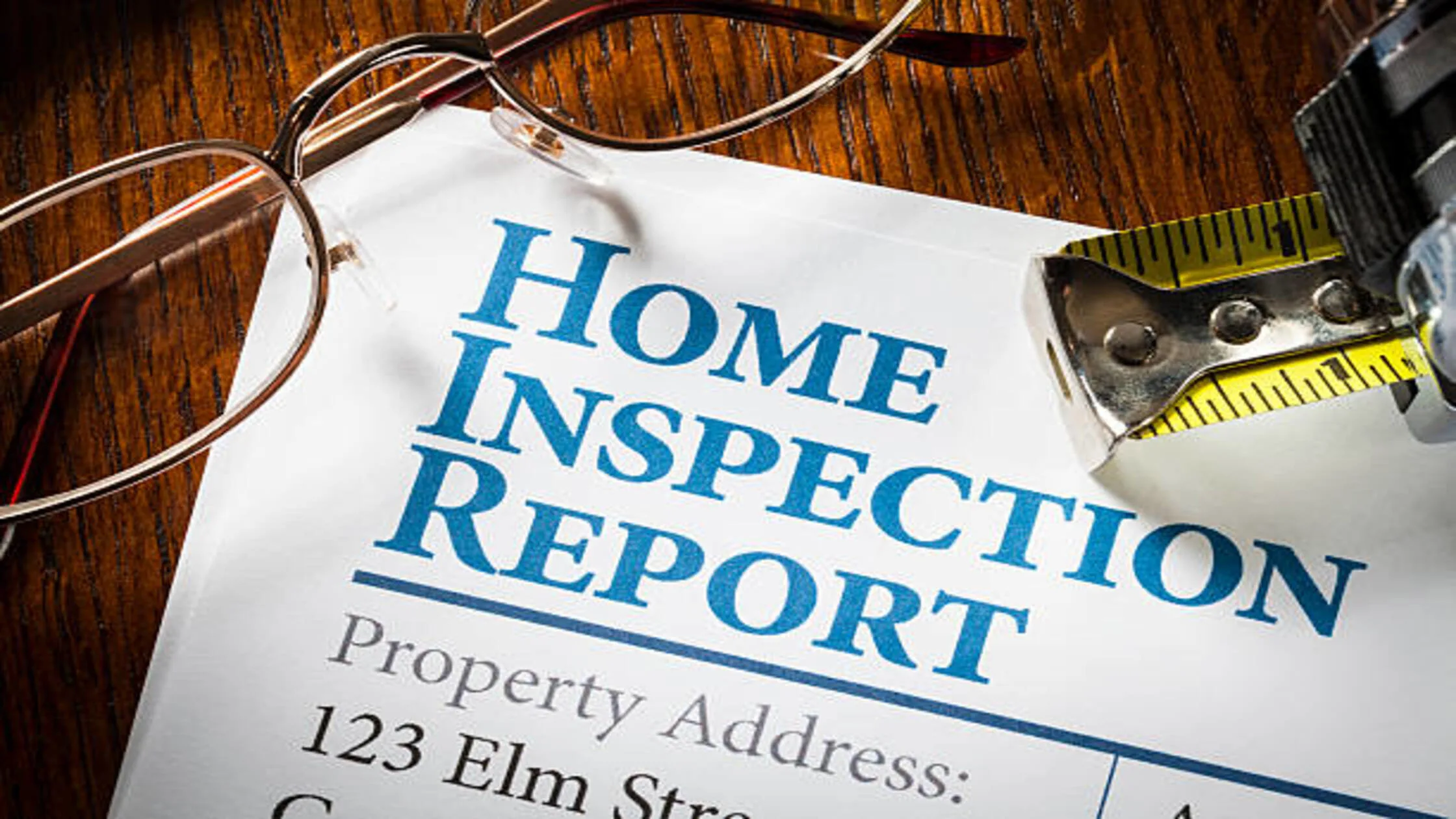
As mentioned above, a smooth, stress-free inspection is really important. Let’s follow these steps!
1. Notify the Tenant with Proper Notice
Respect and communication go hand-in-hand. Written notice delivered at least 24 to 48 hours before the inspection sets clear expectations and respects tenant privacy. The notice should specify the date, time window, and reason for the inspection.
Keeping a record of the notice delivery method (email, mail, or in-person). This documentation protects you legally and demonstrates professionalism.
2. Prepare a Checklist of What to Inspect
Entering with a checklist prevents wandering or accidentally crossing boundaries. Break your checklist into sections for each part of the property:
- Interior: walls, floors, ceilings, appliances, plumbing, smoke detectors
- Exterior: landscaping, roofing, gutters, fences, cleanliness
- Lease compliance: smoking, pets, guests, clutter
3. Document Everything with Photos & Videos
Photos and videos provide an unbiased record that protects both landlord and tenant. Visual documentation highlights damage, wear, and repairs needed or completed.
When to document: During routine, move-in, or move-out inspections, never surprise tenants by taking pictures unexpectedly. Always conduct documentation with tenant's knowledge and consent.
Tips:
- Capture wide shots of rooms to show overall condition.
- Take close-ups of damage, stains, or lease violations.
- Avoid photographing tenant belongings or personal areas.
- Save images with timestamps and keep backup copies.
- Share copies of photos with tenants upon request to maintain transparency.
This documentation becomes invaluable in disputes or insurance claims and helps track property conditions over time.
4. Conduct the Inspection Respectfully
Walk through the property calmly and professionally. Point out issues clearly, avoid confrontational language, and be ready to listen if tenants have concerns.
Treat inspections as an opportunity to build rapport and demonstrate that you’re invested in maintaining a safe, comfortable home.
What To Do When a Tenant Refuses an Inspection
Sometimes, tenants will refuse an inspection. It usually signals deeper concerns or misunderstandings that require careful handling.
When Refusal Is Justified
Refusals often stem from legitimate reasons:
- Lack of proper notice or unexpected scheduling
- Inspection timing outside reasonable hours or during inconvenient times
- Feeling that inspections are too frequent or invasive
- Personal circumstances like illness or emergencies
Landlord Response Plan
Facing a refusal, the best approach centers on professionalism and clear communication:
- Maintain calm and respect: Avoid sounding angry or threatening, which can worsen the situation.
- Ask about the tenant’s concerns: Understanding their reason for refusal reveals whether it’s about timing, privacy, or other issues.
- Offer to reschedule: Propose alternative dates or times within legal guidelines to accommodate the tenant's needs.
- Reiterate lease and legal rights: Calmly remind tenants of the inspection clauses in the lease and the legal requirement for reasonable access.
- Keep thorough records: Document all communication attempts, including notices, tenant responses, and your follow-ups.
- Seek legal advice if needed: Persistent denial without valid reasons may require legal action, but courts generally encourage negotiation first.
Bottom Line
What a landlord can look at during an inspection comes down to one simple rule: check the property, not the people living in it. Done well, inspections become one of the most valuable tools in your landlord toolkit. For more practical tips, check out our LeaseRunner blog.
FAQs
Q1. Can a landlord take photos during an inspection?
Yes, but only under specific conditions. A landlord can take photos of the property’s condition, especially things like damage, safety issues, or areas needing repair. However, photos should focus strictly on the home. Taking pictures of private items, documents, or anything that doesn’t relate to the inspection purpose crosses a line. It’s also best to let the tenant know in advance if photos will be taken.
Q2. Can a tenant refuse an inspection?
A tenant can say no in certain situations: when the landlord didn’t provide proper notice, tries to enter at an unreasonable time, or conducts inspections too frequently. The tenant’s right to privacy is legally protected in every state, and inspections must respect that.
However, a tenant can’t just refuse access forever. Lease agreements and landlord-tenant laws allow landlords to inspect the property with appropriate notice, usually 24 to 48 hours in advance. Refusal without a valid cause may eventually lead to legal action, but it’s always better to resolve things calmly.
Q3. What do landlords look for in inspections?
Landlords focus on the condition of the property and compliance with the lease:
- Water damage, leaks, and mold
- Wall, floor, and ceiling condition
- Functioning smoke/CO detectors
- Appliance wear and tear
- Signs of unauthorized pets or guests
- Evidence of smoking indoors
- General cleanliness and maintenance
- Exterior upkeep (yards, gutters, fencing)
